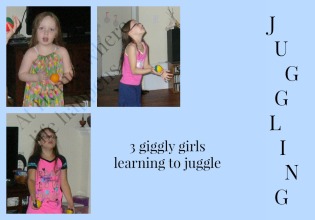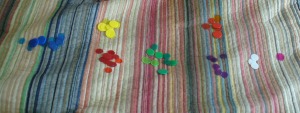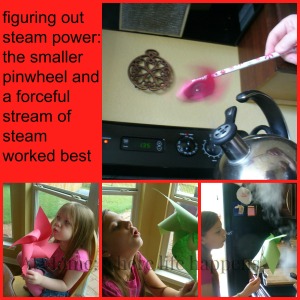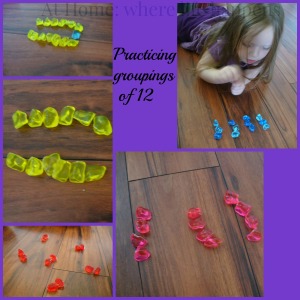I loved the book The Rag Coat. We didn’t spend nearly the time with it that I wanted to. Things just worked out that way. The good part of that is we will be able to revisit it and do so much more with it than we did. I had planned it for the beginning of January, when it would somewhat fit the weather. With all that happened, we ended up stranded by weather for a bit and then At Home Dad did the teaching for about a week so this book ended up by the wayside. We did read it but we didn’t manage to get to many of the activities that I am going to share.
These are the plans that I had made for the book. Hopefully, you can get some use out of the plans. When we get back to the book, hopefully I will keep track and share what we end up doing with you.
As always, I had planned to use the Five In A Row guide for some of the activities.
Geography: We were going to place the icon circle at the Appalachian Mountains. We were going to talk about how the mountains are different in the eastern and western US, as well as a discussion about what makes mountains, how they are formed, what they are made of, and more.
Geography: We were going to work some more on map reading with a US map. I had planned to add a world map and work on finding mountain ranges from around the world. I also planned to pull out a topographical map to discuss elevation changes and see that in relation to the mountain ranges we identify. I was going to create a compass challenge, as well, to help the girls learn to use and navigate with a compass.
History/Culture: We had planned to study the culture of the Appalachian Mountains. The culture is quite different than what the girls have grown up around, especially when we dig back in history. We were going to take a look at the 1930 and what the Great Depression was like, what caused it, how it affected people in the US. We were planning to look at the various relationships shown in the Rag Coat and how those change and develop in the story. We were also going to speculate about how those relationships were affected by the culture in which they lived and how they might be different if we changed some of the variables in their lives.
History: Coal mining had a large impact on the Appalachian Mountains and that area of the country. We were going to study coal mining and what life was like in a coal mining town. We were going to study the jobs related to coal mining and what it did to family structures, communities, and friendships.
Art: We planned to take a deep look at quilting and sewing. Quilting is such an art form and we generally have a local quilt show in January, so we had planned to visit that. We also have some ladies at church that make a quilt for each of the graduating seniors so I had planned to ask one or more of them to discuss quilting, decision making, color scheme, fabric choices, etc. with the giggly girls. I had planned to have the girls make a 9 patch quilt of their own for one of their dolls. I had also planned to have the girls design a quilt on paper and then cut it into a puzzle.
Art: We were going to take a look at color palettes, especially warm vs. cool. The book shows a warm color palette so we were going to create a picture using chalk pastels in a warm color palette.
Art: We were going to look at viewpoint and size. Each of these has a huge impact on the art of quilting so we were going to visit an art museum that had quilts on display that were a pictures (waterfalls, houses, etc). We were going to use those to discuss the viewpoint and size choices the artist made.
Science: We planned to study coal. Its formation, uses, and chemical makeup were all on the books to study. We planned to study its extraction, as well.
Science: We had planned to study textiles and fabrics. We were going to look at cotton and wool. We have a friend who was going to let us see her shear a sheep but that didn’t work out. I have some wool from when I was younger and we were going to look at it under a microscope and study the fibers. We were going to study the process of making a fiber into a textile or fabric that can be used to create clothing with. We were going to take a look at the process of picking cotton and use a memory from my great-grandmother (I was hoping to be able to play the recording of her remembering her youth cotton-picking in Texas.). We were also planning to take a look at the cotton-gin and Eli Whitney.
Literature Connections: Other books I had around for us to look at and discuss included The Patchwork Quilt, Foxfire, Christy, Ballet for Martha, The Keeping Quilt, Joseph Had a Little Overcoat, The Quilt, and Mandie. These run the gamut of reading levels, including some chapter books for oldest.
Music: Listen to Appalachian Spring by Aaron Copeland. This piece of ballet music is beautiful and will capture the imagination of children. You could use it in conjunction with the book Ballet for Martha and YouTube has some videos of some of the early ballet to go with this piece. Other options for music would include a study of banjos and/or bluegrass music.
Music: There are many beautiful folk songs that originated in the Appalachians, such as “Cumberland Gap,” “Ida Red,” “Shady Grove,” and “Paw Paw Patch.” There are lots and lots of songs that have Appalachian roots and a large number of them having singing games to go along with them.
Music/Biography: Jean Ritchie is one of the foremost authorities on authentic Appalachian music. She has a beautiful voice and is a talented instrument player. Studying the lap dulcimer and Jean Ritchie would provide a rich, unique study. While writing this, I saw that Jean Ritchie passed away at the beginning of June. Such an amazing person will be missed.
That is the gist of what was planned. Unfortunately, very little of it got done so I am looking forward to tackling it again at some point. There is a lot of rich learning to be done when you dig into books about Appalachia.
At Home.

















































